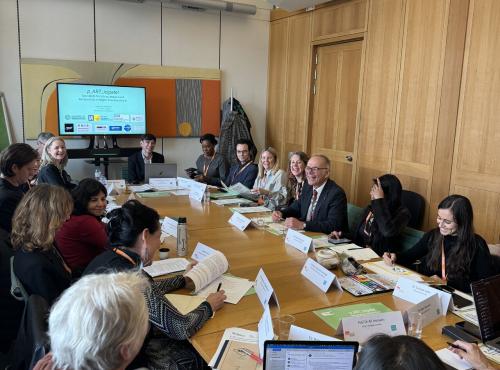Time to face the facts – there can be no backlog recovery without a sustainable anaesthetic workforce
Dr Fiona Donald, President of the Royal College of Anaesthetists shares her thoughts on the role of anaesthetist numbers in addressing the COVID-19 backlog.
The NHS is facing a surgical waiting list crisis. There are now over 5 million people waiting for treatment. The Secretary of State for Health and Social Care has recently warned that this could get worse before it gets better, potentially rising to 13 million in 2022.
It is vital to recognise that this backlog cannot be tackled without anaesthetists because most surgery requires an anaesthetist to be present. Anaesthetists not only administer anaesthetics, but monitor and treat patients throughout their operation, and supervise their recovery. Any shortfall in the number of anaesthetists is, therefore, a limit on the number of operations that can take place.
Like the rest of the health and care workforce, anaesthetists are under pressures in a number of areas. But there are also measures which could be taken to support the workforce and to promote recruitment and retention.
There is currently a shortfall of 1400 anaesthetists across the UK. This shortage will result in 1 million procedures being delayed or cancelled as they are unable to take place. Given the current scale of the NHS backlog, the situation is increasingly urgent.
If we are to achieve the ambition of the Government’s ‘Build Back Better’ plan to tackle the backlog, we need urgent action to both boost numbers of training places for anaesthetists and retain existing staff who may soon be leaving in large numbers.
The shortfall of anaesthetists is not only fueling backlogs, but also increasing costs. Trusts are currently spending millions on agency and bank staff, and on overtime pay. Our network of Clinical Leaders is telling us that many anaesthetic departments are using agency locums at a cost of up to £1760 per day. The elective backlog is likely to take years to tackle, so we need to invest in the workforce now in order to meet the additional demand, prioritise patient safety and create a sustainable health service.
The Royal College of Anaesthetists recommends a year-on-year increase in higher anaesthetic training places. Anaesthetists in these posts will not only support the efforts to bring down waiting lists during their training, but will also be the foundation of a consultant led anaesthetic service fit for the future. In the short term, the training system could accommodate an extra 100 higher anaesthetic training places per year – but in the longer term, capacity will need to be increased further.
Increased the number of training places is only part of the solution. In the immediate term, we need policies and a culture that can retain existing staff. Our work on retention has shone a light on an NHS culture which is not flexible enough to keep people in work, with anaesthetist contracts and beaurocracy acting as barriers to retention.
The College also acknowledges that current pension tax rules are particularly affecting retention. NHS pension reform is needed to incentivize doctors to continue working; current pension taxation is leading to doctors retiring early or cutting their hours.
In numerous surveys by the College we have identified high levels of fatigue and burn-out as a result of the pressures of managing COVID-19 patients while maintaining emergency services and supporting the elective backlog recovery.
As a consequence, one in four anaesthetists are now planning to leave the NHS in the next five years. Others are looking to reduce their working hours and we estimate that around one third of the anaesthetic workforce may be working less than full time within five years. We have the opportunity now and with the workforce plan due to be published in Spring 2022 to create a sustainable long-term plan based on population need.
Like many others I am convinced that we can learn from the pandemic and build a better, more resilient NHS, but this requires investment in training and a concerted effort to retain experienced staff.
For more information on the work of the Royal College of Anaesthetists on workforce please visit our campaign page Anaesthesia – fit for the future.
If you would like to discuss in more detail the issues raised in this blog, please email Advocacy [at] rcoa.ac.uk (Advocacy[at]rcoa[dot]ac[dot]uk).




